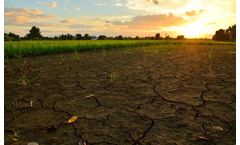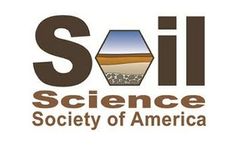Refine by
Soil Mineral Nitrogen Articles & Analysis
27 news found
Does going to the extreme in fertilizer application overcome yield limitations? When it comes to plant development and yield, imbalance is more likely to threaten soil health, production and your pocketbook. Instead, achieving nutrient balance is crucial to crop success. With that in mind, we reflect on the often-perceived conflicting theories – Liebig’s Law of Minimum and ...
Grão Direto, the largest digital platform for grain trading in Latin America, developed in collaboration with Bayer the introduction of the “Sustainable Practices Badge” on its digital marketplace. The badge indicates which farmers on the platform are utilizing agronomic practices that are more beneficial to the environment. The initiative allows the startup to provide even ...
ByBayer AG
Under our feet, in the soil, is a wealth of microbial activity. Just like humans have different metabolisms and food choices, so do those microbes. In fact, microbes play an important role in making nutrients available to plants. A recent review paper from Xinda Lu and his team looks at different roles that various soil microbes have in soil’s nitrogen cycle. Lu is a researcher at ...
Why? Because improved grass growth towards the end of the season has the potential to produce silage quality similar to first cut. True, it may not yield as well. But it has the capacity to deliver good protein and energy levels. Which is exactly what’s needed for more litres of milk from forage. And, if you are on a multi-cut system, you may be glad of that extra yield. Unlocking ...
Cows in Brazil might start bellowing "leguuume" rather than "moo." That's because Jose Dubeux Jr. wants to plant more legume trees in cow pastures. Dubeux is an assistant professor of Agronomy at North Florida Research & Education Center. Growing up, Dubeux spent a lot of time on his grandparents' farm in Brazil. There he developed a passion for livestock operations and the grasslands on ...
Farmers’ and growers’ confidence in digestate and compost has been given a welcome boost, as new ground-breaking research published today, shows smart use of these renewable fertilisers can increase yields and reduce bills with no negative impact on crop quality or safety. The programme of field experiments, ‘Digestate & Compost in Agriculture’ ...
The less nitrogen there is in the soil, the better plants are at using it. Researchers from INRA, CNRS and CIRAD, in cooperation with Czech colleagues, have recently shed light on the crucial role of a protein that enables plants to not only assess their environment but also activate the proper adaptive response based on the conditions. This research, published in the 2 March 2015 issue of Nature ...
Increased soil biodiversity can reduce nitrogen pollution, improve nutrient uptake by plants and even increase crop yields, new research suggests. The two-year study found that levels of nitrogen leaching from soil with an abundant soil life were nearly 25% lower than for soil with a reduced level of soil life. Practices which enhance soil biodiversity such as reduced tilling, crop rotation and ...
The drying of soils under global warming could disrupt the balance of nutrients in large areas of the Earth’s land surface, according to new research. The study focused on ‘drylands’ – arid areas with low levels of rainfall – which support over 38% of the world’s population. Such nutrient imbalances could diminish the provision of ecosystem services, such as ...
A large-scale research and development project has shown that giving farmers resources and advice on nitrogen fixation through legume plants can double yields and boost incomes in Africa. But not all farmers are benefiting from this practice due to a lack of access to inputs, such as fertilisers says Ken Giller, the leader of the N2Africa project, as a second phase to widen access to the ...
The increased aridity expected this century as a result of climate change may disrupt the balance of key soil nutrients with a knock-on effect on soil fertility threatening livelihoods of more than two billion people, a study finds. The drop in nitrogen and carbon concentrations that occurs as soils become dryer could have serious effects on ecosystem services such as food production, carbon ...
Arcadia Biosciences, Inc., an agricultural technology company focused on developing technologies and products that benefit the environment and human health, and the African Agricultural Technology Foundation (AATF) today announced the planting of the first field trial of Nitrogen Use Efficient (NUE) rice in Africa. The NUE rice field trial is the result of more than five years of collaboration ...
During 29 years of study, different fields have undergone the same crop cycles, but have been fertilised in one of three different ways: with synthetic fertiliser, with cattle manure, or with a method that uses manure in addition to a ‘biodynamic agriculture’ fertilising technique, which also applies specific mixtures of herbs and minerals. All three fertility ...
Desert soil microbes could help halt desertification and boost agriculture in arid regions of the Middle East and North Africa, according to a study. Scientists from the United Arab Emirates [UAE] have isolated local salt- and drought-tolerant strains of Rhizobia, soil bacteria that fix nitrogen when they become established inside the root nodules of legumes. Rhizobia bacteria establish a ...
Energy crop company Ceres, Inc. (Nasdaq: CERE) today announced that the U.S. Agency for International Development, or USAID, has expanded its grant to the company to develop traits in rice for Asia. Based on Ceres' success to date, USAID will provide an additional $3.5 million to Ceres over the next four years to extend field trialing and development of the company's biotech traits and trait ...
ByCeres
Nitrogen fertilizers from farm fields often end up in aquatic ecosystems, resulting in water quality problems, such as toxic algae and underwater ‘dead zones’. There are concerns that fertilizers used on lawns may also contribute to these problems. All of the lawns in the United States cover an area almost as large as Florida, making turfgrass our largest ‘crop’ and lawn ...
"Ants and termites perform the same ecosystem service functions in dryland agriculture that earthworms perform in cooler and wetter areas, but the potential for ants and termites to provide these benefits has received little attention until now," said CSIRO's Dr Theo Evans. "We already knew that the activities of ants and termites affect soil structure, aeration, water infiltration and nutrient ...
Equal Exchange, the nation's leading Fair Trade brand, is making it easier than ever to give gifts that "give twice" by expanding the selection of gourmet, organic, Fair Trade gifts and gift baskets available through their online store http://Shop.EqualExchange.com, and by introducing a new business gifts program. The new business gift program simplifies the process for organizations sending ...
Soil scientists studying bacterial communities in hardwood forests have found evidence that extra human-derived nitrogen deposited from the atmosphere can change the composition of the soil microbial community, with implications for carbon cycling and sequestration. Don Zak and Sarah Eisenlord from the University of Michigan conducted a study on the response the soil bacterial community to ...
Scientists are exploring ways to reduce non-point pollution from agriculture. A new study finds that using straw residue in conjunction with legume cover crops reduces leaching of nitrogen into waterways, but may lower economic return. Agriculture is the largest source of nitrogen non-point pollution to waterways in the United States, flowing into streams and rivers via erosion from farmlands, ...











